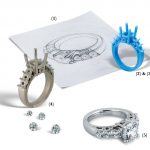Padmavati Jewellery – Gems of Rajasthan – Samanvita Gnanesh
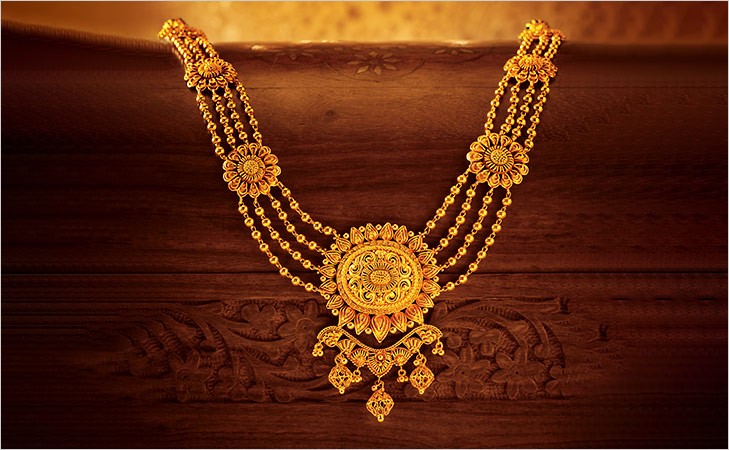
Padmavati Jewellery – Gems of Rajasthan – Samanvita Gnanesh (2017 – 18)
The land of kings, also known as the cultural capital of India, Rajasthan is vibrant and appealing in nature. Though a desert, its culture is everything but barren. The state attracts tourists for many things like culture, mouth-watering food, staggering palaces and their way of life., one among such attractions is the jewellery industry. Rajasthan is one of the world’s largest centres for hand cutting of gems. It also serves as an important source of precious and semi-precious stones in India. Gems such as Ruby, Emerald, Garnets, Agate, Amethyst, Topaz, Lapis lazuli, Carnelian, etc count amongst the finest of Rajasthan. The most famous market for Rajasthani gems & jewellery is the Johari Bazaar Market of Jaipur which ranks amongst the most exclusive jewellery markets in the world.
Royalty has been a big influence on many aspects of Rajasthan, more so on their jewellery which is evident through their elegant and sophisticated designs. Rajasthan has a blend of skilled artisans from Lahore, Delhi, Gujarat and Bengal. Some of the famous techniques followed by the artisans are Kundankari work, Minakari work, Thewa and Jadau technique. When we talk about types of jewellery – Kundan and Polki jewellery, Banjara tribal jewellery, Lac jewellery, Borla/Rakhdi, Nath, Aadh, Baajunandhi, Bangadi, Tagdi and haathphool are to name a few.
Kundankari technique, where a precious stone is set with gold foil between the stone and the mount. Earlier Kundan jewellery was only meant for gold, but these days we get them in silver as well.
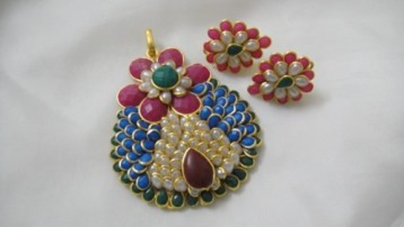
Kundankari Technique
Meenakari technique in jewellery is enamelling with bright colours.
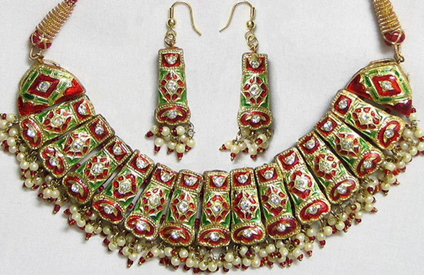
Meenakari Technique
Thewa technique is where the designs are enamelled in gold on either red, green or blue glass making it exquisite.
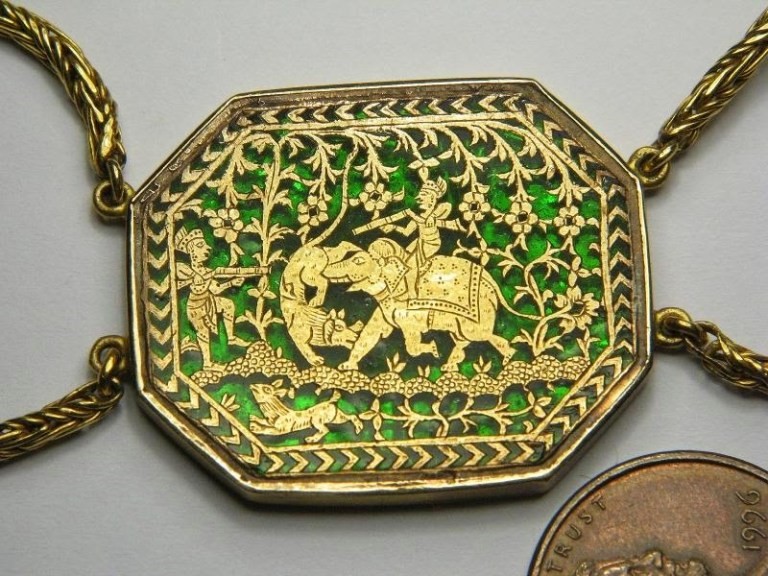
Thewa Technique
Jadau technique shows the influence of Mughals in Rajasthani jewellery. The technique was brought in during the Mughal era, which over the years was perfected by the artisans who also added their unique touches. In this technique, pure gold is heated until flexible enough to create motifs and frame for design, after the gems are set, the artisans move on to the meenakari work on the piece. This technique is time consuming resulting in a staggering piece of jewellery. In fact, even the meenakari (enamelling) work originated from the Persians. It was brought into India by the Mughal rulers.
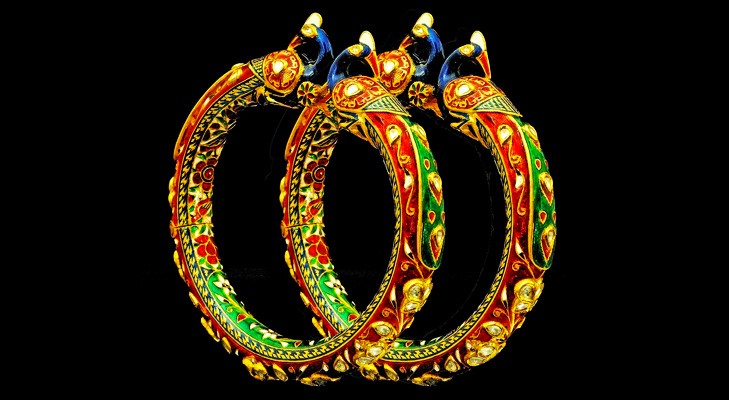
Jadau Technique
Polki jewellery uses natural, uncut and unpolished diamonds making each one unique and exceptional.
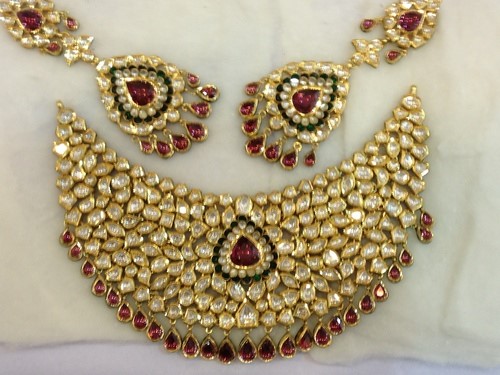
Polki Jewelry
The tribal jewellery worn by the Banjara tribe of Rajasthan is world-renowned. These are usually made of silver fashioning hollow bells.
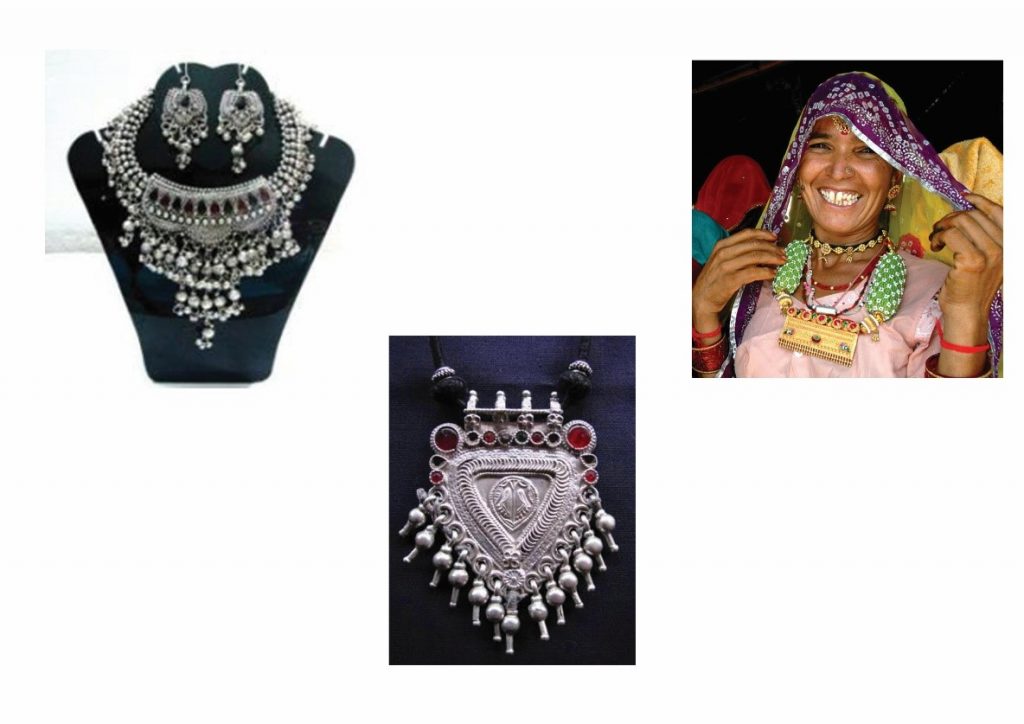
Tribal Jewellery
Another famous type of jewellery is the lac jewellery made from molten Lava in vibrant colours. Lac Bangles are a speciality of Rajasthan.
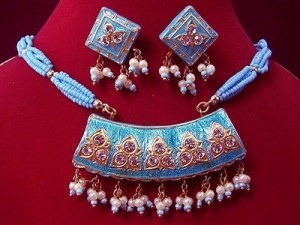
Lac Jewellery
Rakhdi or borla, a type of maang tikka is a headgear, which unlike the regular, is spherical or bell-like. It is a gold ornament with kundans, Meena work and pearls.
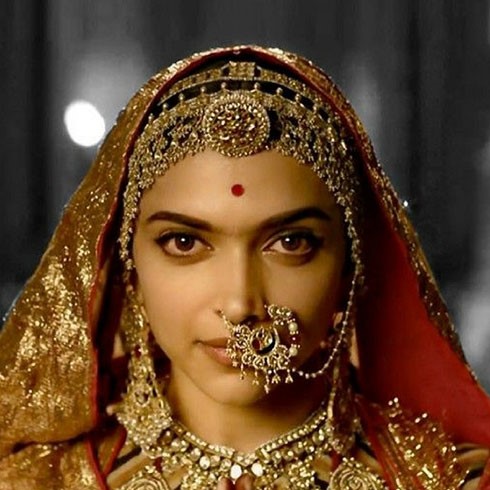
Deepika padukone fashioning Borla in the movie Padmavati
Nath is a golden ring worn usually on left nostrils connected to the left ear with a gold or pearl chain.
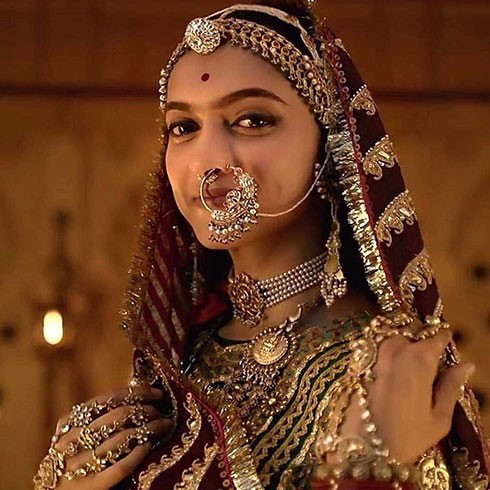
Deepika Padukone as Queen Padmavati wearing a Nath
Source: http://www.bindashbol.com/wp-content/uploads/2017/11/deepika-padukone-padmavati-jewellery.jpg
Aadh is a neckwear with is square/rectangle in shape, according to tradition this is given to the bride by the groom’s family. This is worn by the bride along with raani haar which is long and touches the naval.
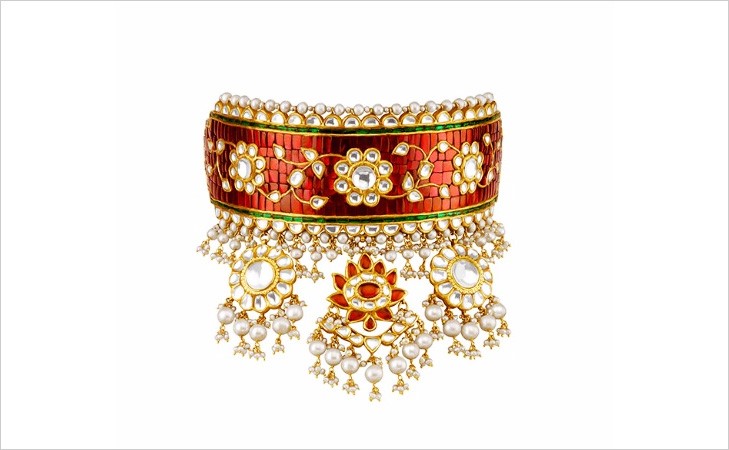

Aadh and Rani haar created by Tanishq for the movie – Padmavati
Baajubandh is an armlet worn by Rajasthani brides. The ornament is traditionally designed with red and green enamel work along with stonework.
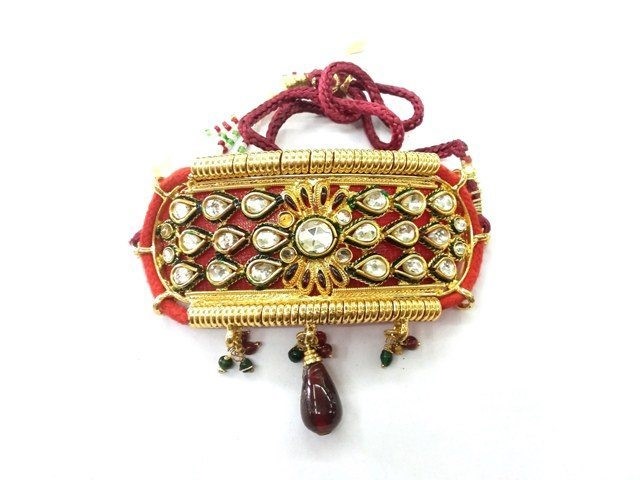
Baajubandh
Bangadi is a special bangle worn only by the married Rajasthani women.
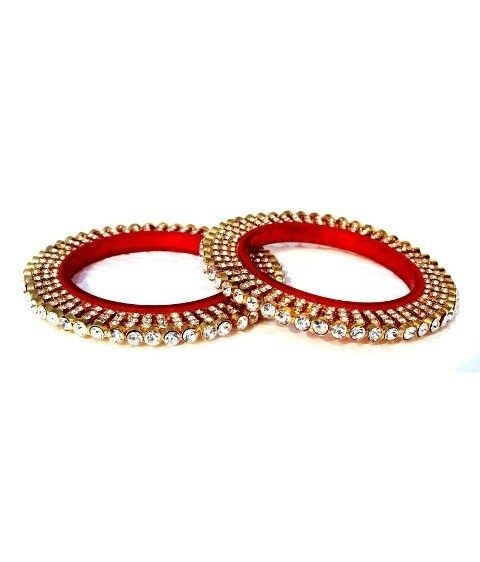
Bangadi
Kardhani or Tagdi is a waist chain usually made of gold, polki and occasionally kundans.
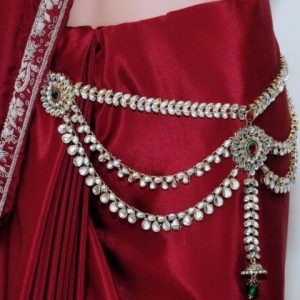
Kardhani or Tagdi
Haathphool is yet another ornament which is a five finger ring attached to gold strings connecting to a flower.

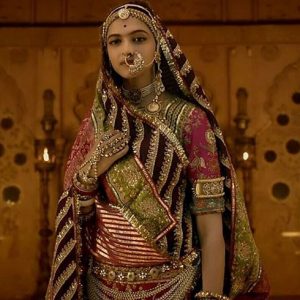
Jewelers such as Tanishq have done an exemplary job at creating the impeccable line of Padmavati jewellery for movies like Jodha Akbar and Padmavati showcasing the vibrancy of the royal Rajputhani jewellery. In a recent video release by Tanishq, it showed that more than 200 craftsmen worked for more than 2 years to create jewellery from over 400 kilos of gold for the movie Padmavati. The elaborate and exquisite nature of jewellery worn by the leads in these movies is a testament to the hard work of the artisans reincarnating a lost heritage of Rajasthan.
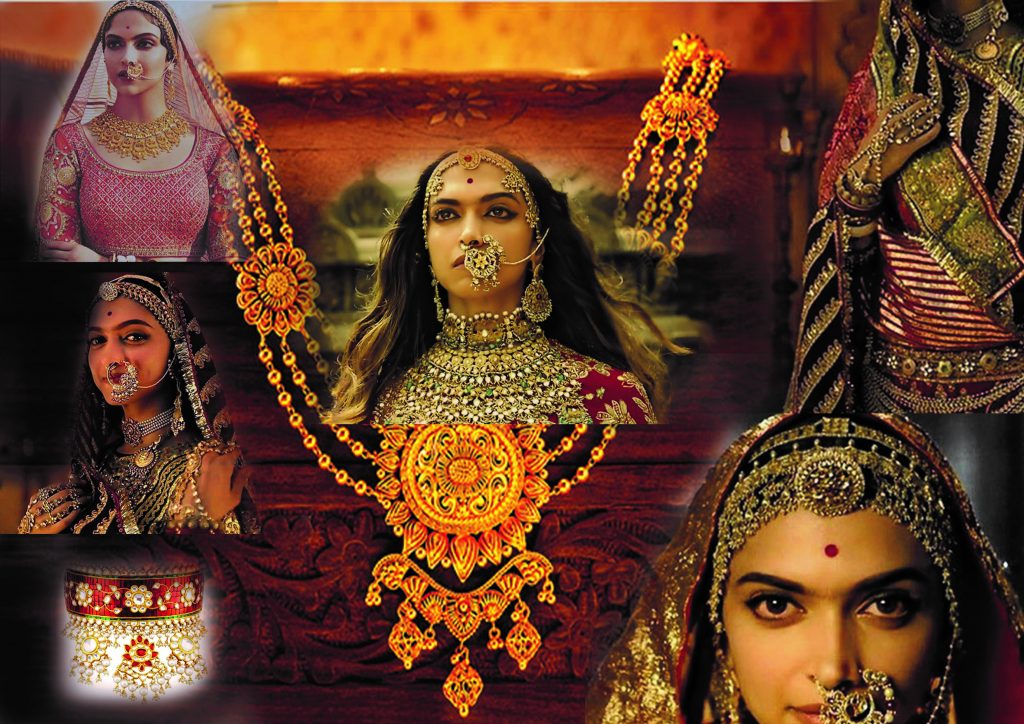
Padmavati Jewellery
Source: http://img01.ibnlive.in/ibnlive/uploads/2017/10/Padmavati-Movie-Stills-32.jpg
Rajasthan may have many things to offer to the world, but its rich cultural inheritance has played a vital role in the jewellery industry. This is aptly showcased in movies like Jodha Akbar and Padmavati where the elegance of the royals and their elaborate jewellery is etched in the minds of the viewers. Every twirl of Deepika Padukone or the angelic walk of Aishwarya Rai reminds us of the enormity of legacy and heritage we have left behind.
JD Institute of Fashion technology one of the top Institute in Jewellery design always nudges the jewellery design course students to take that extra step of doing research on these kinds of traditional jewellery, making them understand the importance of culture and traditions.




